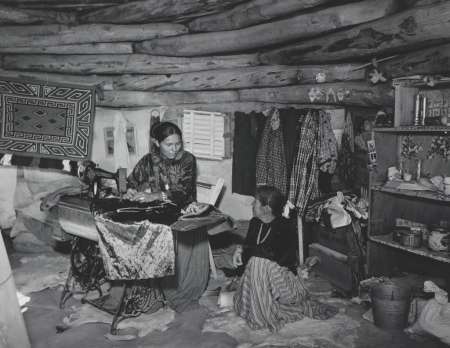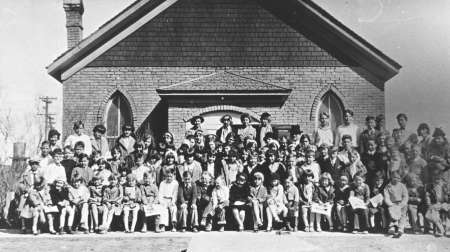- Communities
- Arts and Crafts
- Navajo Profiles
- Navajo Customs and Traditions
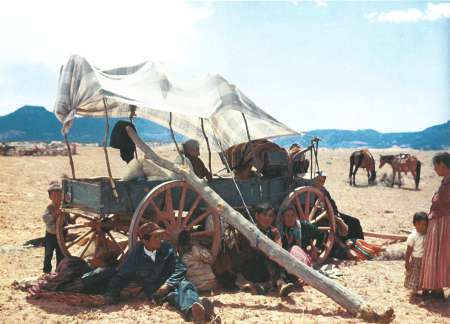
Navajo Wagon
Navajo Family Color Wagon
Photo used by permission of the Amon Carter Museum of American Art, Fort Worth, Texas, from the collection of Laura Gilpin, author.
photo id: 1118
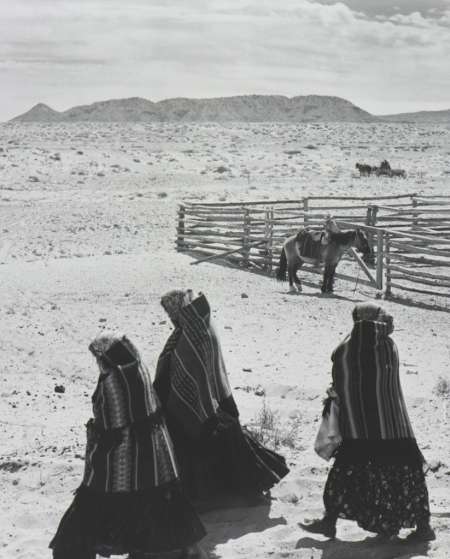
Navajo Women Traveling to Trading Post
Navajo women wearing traditional blankets on their trek to the trading post.
Photo used by permission of the Amon Carter Museum of American Art, Fort Worth, Texas, from the collection of Laura Gilpin, author.
photo id: 1123
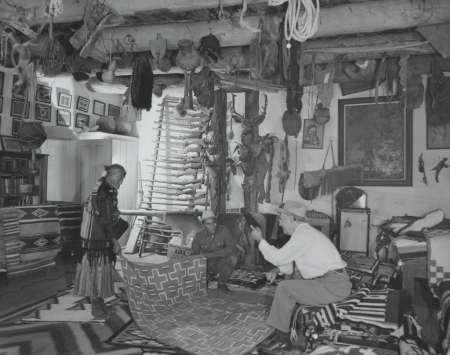
Hubbell Trading Post
“Probably the least changed of the famous trading posts is the Hubbell Post at Ganado, Arizona. This is one of the exceptions where the land was homesteaded by Don Lorenzo Hubbell, for at that time, 1876, this land was not part of the reservation. Don Lorenzo, the son of a Connecticut Yankee and a Spanish mother, purchased a store built six years previously at this site, in all probability the oldest post following the first at Fort Defiance. When Don Lorenzo bought the post, he also homesteaded a 160-acre tract of land. He erected a number of fine substantial buildings during the course of his life. His post became a mecca for anthropologists, archaeologists, writers, and a host of visitors, as did the posts of other famous traders.
Here, in Don Lorenzo’s treasure room, is his late son Roman Hubbell, discussing the merits of a rug just brought in to be sold. On the walls are hung relics of the past—Kit Carson’s gun scabbard, a fine old gun collection, water containers of many different types, a superb collection of Indian baskets from various tribes, archaeological specimens from nearby early Pueblo ruins. Piled high along another wall of the room are stacks of Navaho rugs, all of top quality, for which the Hubbell Post has always been famous. “Cozy” McSparron, Hubbell, and later the Lippincotts at Wide Ruins, did much to restore the use of natural dyes in rug making. This is one of many instances when the traders’ influence has counted most, and today certain areas of the reservation are noted for rugs of widely different types.”
Photo used by permission of the Amon Carter Museum of American Art, Fort Worth, Texas, from the collection of Laura Gilpin, author.
photo id: 1124
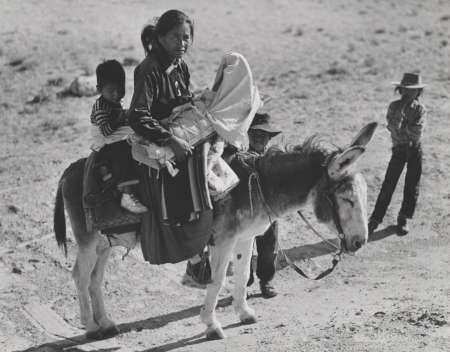
Travelling Navajo Family
“A Navaho thinks nothing of walking many miles if he has no means of transportation. We have come upon this many times. Once, as we were traveling to Tuba City from the Hopi country, we came to a slight crest in the undulating desert; beyond we saw a family—a woman with a baby in a cradleboard and a small child riding a burro, while two older boys were on foot. When we reached them we produced some candy for the children and tried to chat a little, though no one seemed to understand English. They were curious about us, surprised by our offer, and thoroughly friendly. They seemed miles from any habitation, yet in the gentle rise and fall of the desert, it is remarkable how a hogan can be hidden from view.”
Photo used by permission of the Amon Carter Museum of American Art, Fort Worth, Texas, from the collection of Laura Gilpin, author.
photo id: 1125
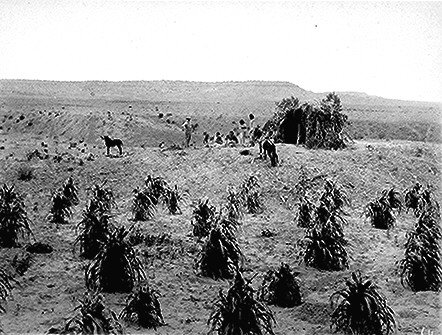
Navajo Hogan Community
Navajo hogan and cornfield, near Holbrook, Arizona
Photographed by F.A. Ames, 1889
photo id: 1135
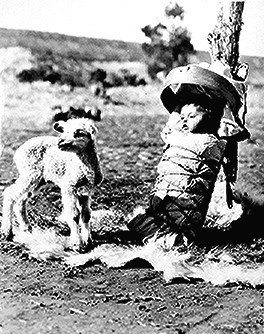
Navajo Baby and Lamb
Navajo papoose on a cradleboard with lamb approaching, Window Rock, Arizona
Photographed by H. Armstrong Roberts, circa 1936
photo id: 1137
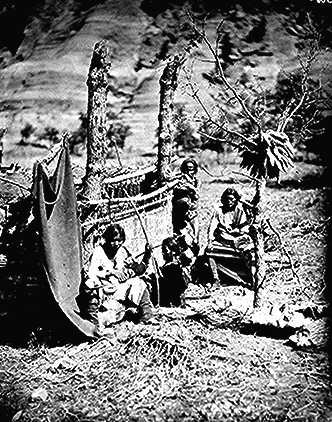
Navajo Family Group
Navajo Family Group in Canyon de Chelle, New Mexico Territory. Woman weaving at loom and man holding a bow and arrow.
Photographed by Timothy H. O’Sullivan, 1873
photo id: 1139
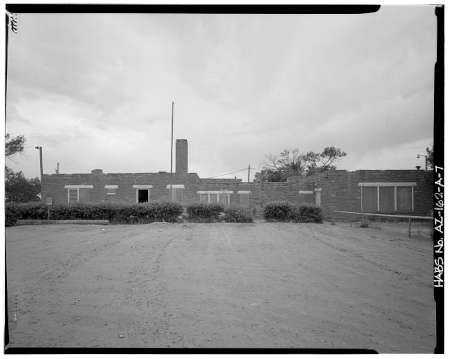
Courtyard of Navajo Boarding School
North Side – Pinon Boarding School, Classroom Building, Navajo Route 41, North of Navajo Route 4, Pinon, Navajo County, AZ
Library of Congress, Prints & Photographs Division, HABS ARIZ,9-PIN,1A–6
photo id: 1144
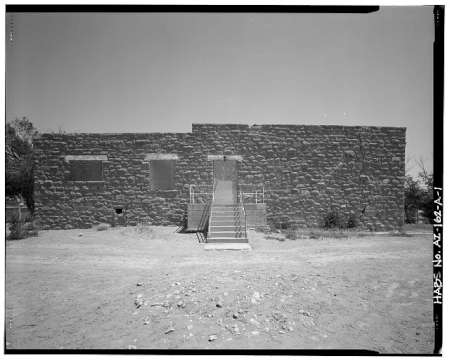
Entrance of Navajo Boarding School
South Entrance OF Building 301 – Pinon Boarding School, Classroom Building, Navajo Route 41, North of Navajo Route 4, Pinon, Navajo County, AZ
Library of Congress, Prints & Photographs Division, HABS ARIZ,9-PIN,1A–1
photo id: 1145
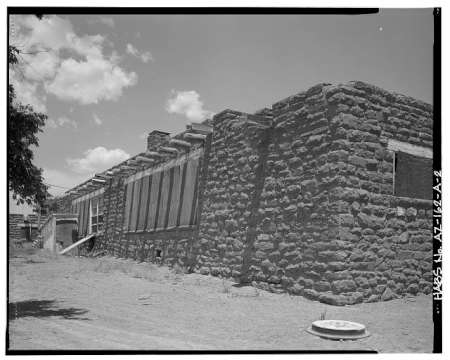
Side View of Navajo Boarding School
Oblique View West Side of Classroom Wing – Pinon Boarding School, Classroom Building, Navajo Route 41, North of Navajo Route 4, Pinon, Navajo County, AZ
Library of Congress, Prints & Photographs Division, HABS ARIZ,9-PIN,1A–2
photo id: 1146
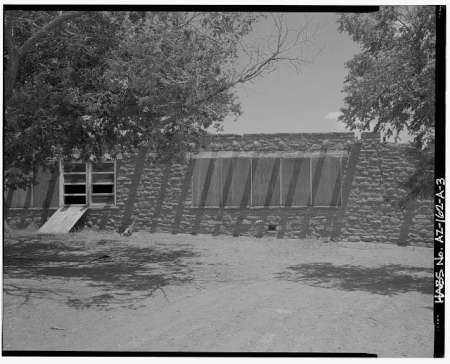
Windowed Classroom of Navajo Boarding School
West Side of Classroom Wing – Pinon Boarding School, Classroom Building, Navajo Route 41, North of Navajo Route 4, Pinon, Navajo County, AZ
Library of Congress, Prints & Photographs Division, HABS ARIZ,9-PIN,1A–3
photo id: 1149
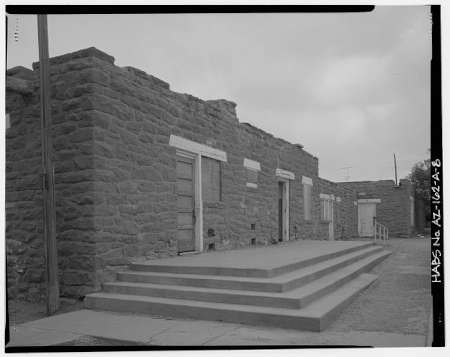
Steps to Navajo Boarding School Classroom
Oblique View Upstairs of North Entry. Administration Office and East End of Vocational Wing in Background – Pinon Boarding School, Classroom Building, Navajo Route 41, North of Navajo Route 4, Pinon, Navajo County, AZ
Library of Congress, Prints & Photographs Division, HABS ARIZ,9-PIN,1A–7
photo id: 1150
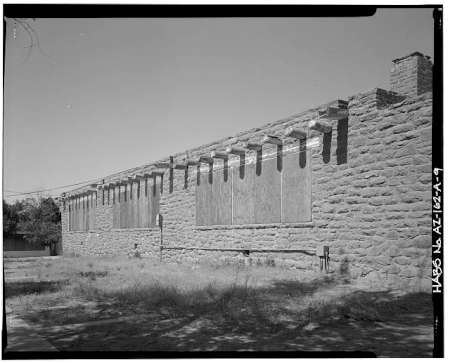
Back View of Navajo Boarding School
Oblique View of East Side of Classroom Wing – Pinon Boarding School, Classroom Building, Navajo Route 41, North of Navajo Route 4, Pinon, Navajo County, AZ
Library of Congress, Prints & Photographs Division, HABS ARIZ,9-PIN,1A–8
photo id: 1151
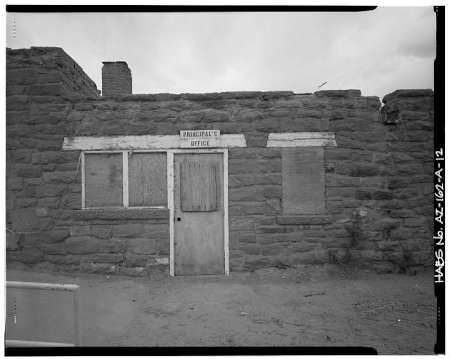
Principal’s Office of Navajo Boarding School
Detail of Entry to Prinicipal’s Office – Pinon Boarding School, Classroom Building, Navajo Route 41, North of Navajo Route 4, Pinon, Navajo County, AZ
Library of Congress, Prints & Photographs Division, HABS ARIZ,9-PIN,1A–11
photo id: 1152
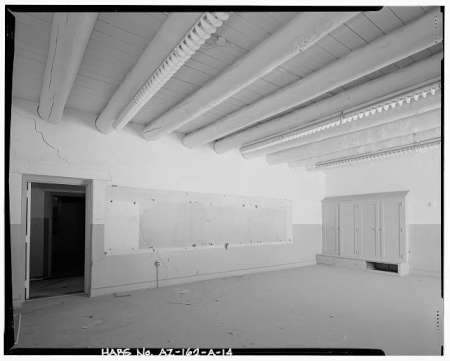
Inside of Navajo Boarding School Classroom
Interior View of Typical Classroom Showing Built-In Storage – Pinon Boarding School, Classroom Building, Navajo Route 41, North of Navajo Route 4, Pinon, Navajo County, AZ
Library of Congress, Prints & Photographs Division, HABS ARIZ,9-PIN,1A–12
photo id: 1153
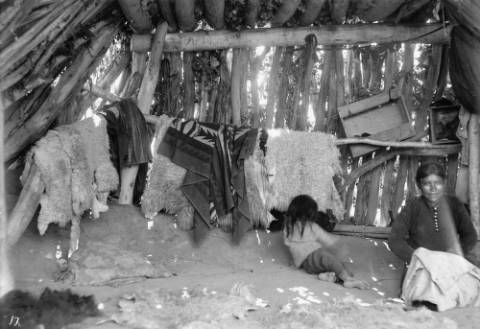
Navajo Mother and Baby
Navajo woman and baby in the interior of a hogan
Western History/Genealogy Department, Denver Public Library
photo id: 1169

Camp Navajo
Aerial view of a Navajo camp
Western History/Genealogy Department, Denver Public Library
photo id: 1172
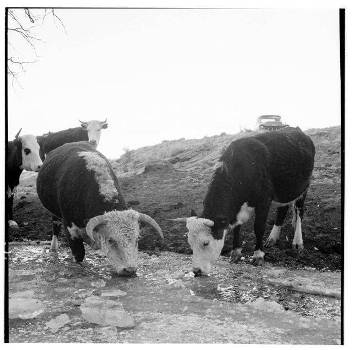
Cattle drinking
Cattle drinking frozen creek water
NNM.L-0750B2: The Navajo Nation Museum [Navajo Nation Public Relations]
photo id: 1196

Navajo Cattle
Cattle drinking frozen creek water, 1960 ca.
NNM.L-0750B2: The Navajo Nation Museum [Navajo Nation Public Relations]
photo id: 1197
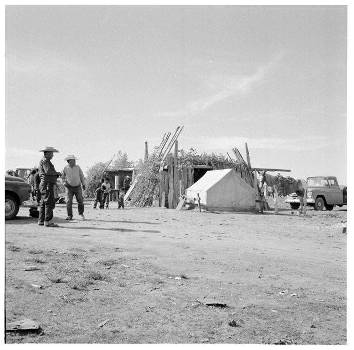
Navajo Campsite
Nadaa campsite on the Navajo Reservation
NNM.L-1077C2: The Navajo Nation Museum [Navajo Nation Public Relations]
photo id: 1198
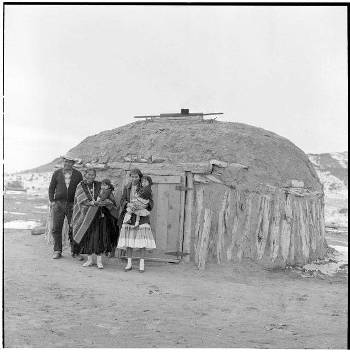
Family Hogan
Navajo Family by their hogan
NNM.L-5236B2: The Navajo Nation Museum [Navajo Nation Public Relations]
photo id: 1199
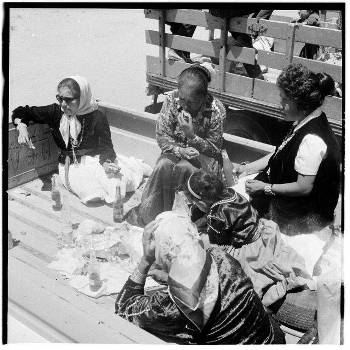
Lunchtime for Working Navajo Women
Navajo ladies eating in back of pickup truck
NNM.L-1080C1: The Navajo Nation Museum [Navajo Nation Public Relations]
photo id: 1200
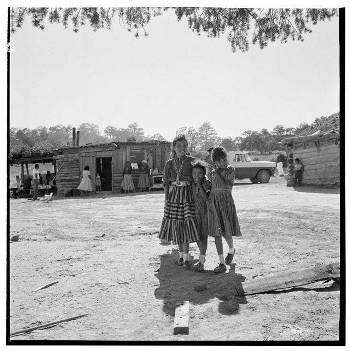
Navajo Life on the Farm
Profile of youth on Navajo farm
NNM.L-2036C4: The Navajo Nation Museum [Navajo Nation Public Relations]
photo id: 1201

Wool Carding by Navajo Girl
“Carding. In early times cards consisted of burrs held in place by strips of leather mounted on small boards with handles at one side. These were replaced when metal cards of American manufacture were procurable at the trading posts. When a weaver is ready to card her wool, she first loosens it by hand, then combs it between carding tools until the hairs lie all in one direction. Carded wool emerges in the form of soft pads called “rovings,” ready to be twisted into continuous strands. If a weaver wants to produce good gray color, she mixes wool from black sheep with that of white as she cards the wool. This method makes the finest gray used in many rugs, particularly those from the Two Gray Hills area.”
Photo used by permission of the Amon Carter Museum of American Art, Fort Worth, Texas, from the collection of Laura Gilpin, author.
photo id: 1129
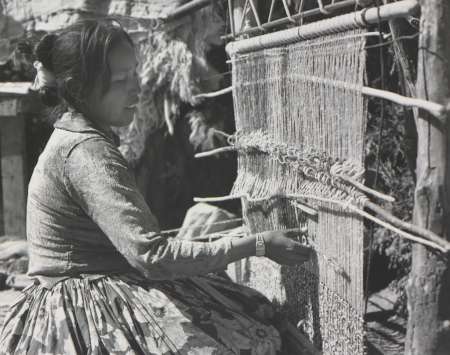
Navajo Woman and her Loom
“The Loom. The structure of the loom is both simple and practical. It consists of two parts: the weaving frame and the stationary upright poles and cross beams which hold the weaving frame while in use. This images shows the shed stick at the top of the warp, then three heddle sticks, then the battens, one turned on edge to spread the warp.”
Photo used by permission of the Amon Carter Museum of American Art, Fort Worth, Texas, from the collection of Laura Gilpin, author.
photo id: 1131
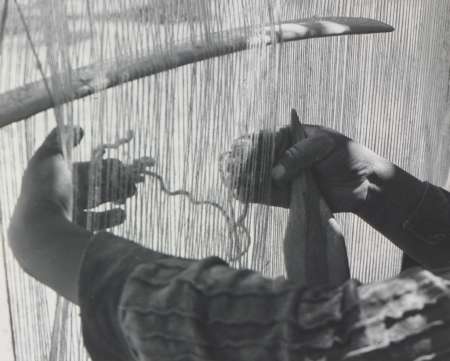
Navajo Loom
“A stick used as a shuttle with the usual hand method of looming.”
Photo used by permission of the Amon Carter Museum of American Art, Fort Worth, Texas, from the collection of Laura Gilpin, author.
photo id: 1132

Navajo Mother and Child with Loom
“A herringbone weave with top and side edge cords.”
Photo used by permission of the Amon Carter Museum of American Art, Fort Worth, Texas, from the collection of Laura Gilpin, author.
photo id: 1133
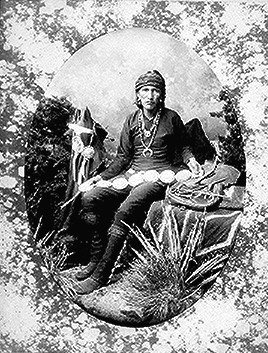
Navajo Silversmith
Navajo silversmith with examples of his work and tools.
Photographed by Ben Wittick, circa 1880
photo id: 1138
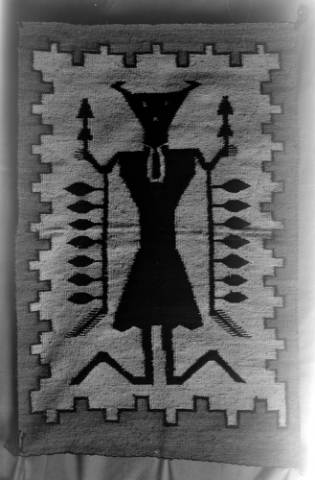
Chindy Blanket
An example of a Navajo Blanket, called a Chindy Blanket
Western History/Genealogy Department, Denver Public Library
photo id: 1173
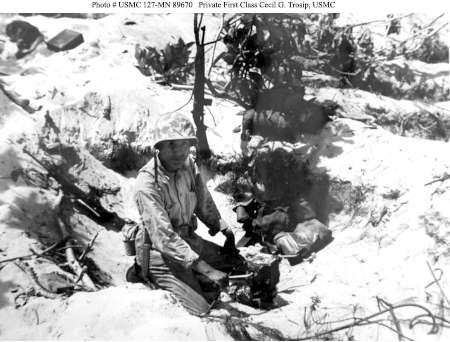
Navajo Code Talker, Private Trosip
Private First Class Trosip, from Oraibi, Arizona, at a communication system on the island of Saipan, July 1944.
Photographed by Sergeant Williams, USMC.
photo id: 1107
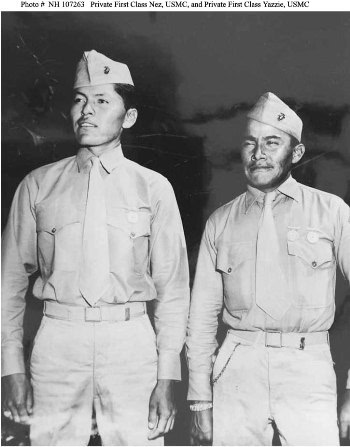
Navajo USMC Privates
These Privates First Class participated in the Marine Corps Pacific Division Rifle and Pistol matches at Puuloa Point, then Territory of Hawaii. Both were full-blooded Native American Marines. Both Marines fired a total score of 545 out of a possible six hundred, but Yazzie fired a higher score on the second day and placed third while Nez placed fourth. Yazzie received a gold medal, Nez the first silver medal. Presentations were made by Brigadier General H.D. Linscott, Commanding General Marine Garrison Forces, Pacific. Both Marines represented the First Marine Division in these matches.
Photographed in January 1943.
photo id: 1195
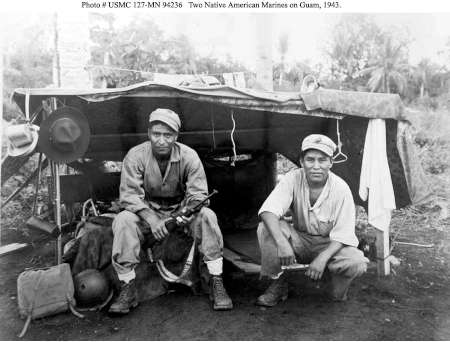
Navajo Soldiers in Guam
These two Marines take camp life with ease and are shown here before their little shelter on a hillside on Guam many miles from their Arizona homes. They are both attached to a communications unit and are veterans of many brushes with the Japanese, 27 March 1943.
photo id: 1108
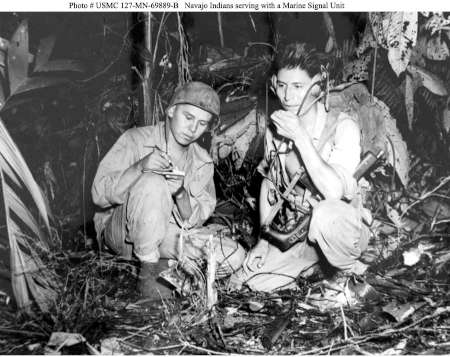
Navajo Marines operating radio communications
Bake and Kirk were Navajo Indians serving with a Marine Signal Unit. They are operating a portable radio set in a clearing they’ve hacked in the dense jungle close behind the front lines.
Photographed in December 1943 at Bougainville.
photo id: 1110
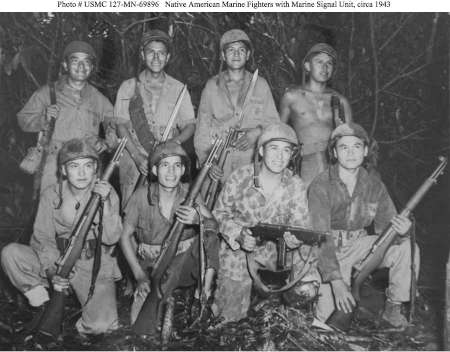
Navajo Marine Signal Unit
These Native American fighters, all from the Navajo tribe, were skilled in the native lore of their ancestors while serving with a Marine Signal Unit. They are:
Front Row: (left to right):
Private Earl Johnny, USMC;
Private Kee Etsictty, USMC;
Private John V. Goodluck, USMC; and
Private First Class David Jordan, USMC
Back Row: (left to right):
Private Jack C. Morgan, USMC;
Private George H. Kirk, USMC;
Private Tom H. Jones, USMC; and
Corporal Henry Bake, Jr., USMC
Photographed at Bougainville, December 1943.
photo id: 1111

South Pacific Navajo Code Talkers
These Navajo Native American Code Talkers were cousins and attached to a Marine Artillery Regiment in the South Pacific. They relayed orders over a field radio using their native tongue. Photographed on 7 July 1943.
photo id: 1112

Three Navajo Marine Privates
These Native American Marines were photographed in March 1945 while on their way to the Japanese war front. Privates First Class Williams and Kellwood were from the Navajo tribe while Private Saupitty was from the Comanche tribe. All were veterans from the Battle of Peleliu, September-October 1944.
photo id: 1113
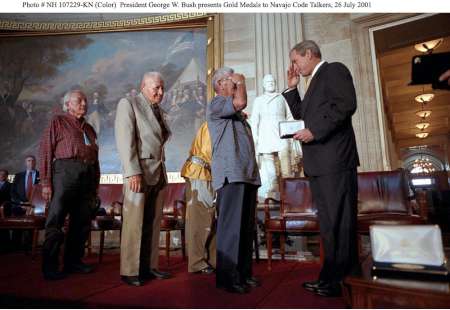
President Bush honoring Navajo Code Talkers
Presents Congressional Gold Medals to four of the five remaining former Navajo Code Talkers who served during World War II in the U.S. Capitol Rotunda, 26 July 2001.
photo id: 1114
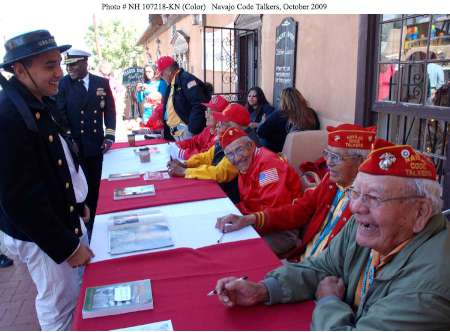
Navajo Code Talker Reunion
Airman Jose Porcayo, assigned to USS Constitution shares a laugh with veterans who served in the U.S. Marine Corps as Navajo Code Talkers during World War II at a book signing during Albuquerque Navy Week. Navy Weeks are designed to show Americans the investment they have made in their Navy and increase awareness in cities that do not have a significant Navy presence, 4 October 2009.
Photographed by MC1 Eric Brown, USN
photo id: 1115

Navajo National Park Ranger
“The first appointed Navaho to the National Park Service staff, serving as a ranger at Navajo National Monument, was Hubert Laughter. Today he is a member of the Tribal Council.”
Photo used by permission of the Amon Carter Museum of American Art, Fort Worth, Texas, from the collection of Laura Gilpin, author.
photo id: 1128
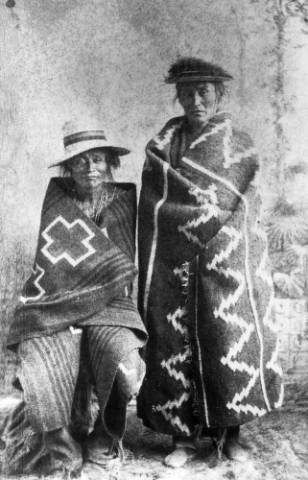
Navajo Jake Calletano
A picture of Navajo Jake Calletano (seated)
Western History/Genealogy Department, Denver Public Library
photo id: 1171

Navajo Woman
Navajo Costume 1930’s
Photo used by permission of the Amon Carter Museum of American Art, Fort Worth, Texas, from the collection of Laura Gilpin, author.
photo id: 1117

Navajo Women Washing Dishes
From the book The Enduring Navaho:
“Once, when we were visiting under a summer shelter, our friend Paulina was making ready to wash a few dishes. I asked her if I might make a picture showing how the Navaho can wash dishes in a tea cup full of water. She took me quite literally and, measuring out a cup, proceeded to wash the few dishes. And they were clean. It is surprising how cool it can be under one of these shelters on a hot summer day, for there is always a breeze—all one needs is shade.”
Photo used by permission of the Amon Carter Museum of American Art, Fort Worth, Texas, from the collection of Laura Gilpin, author.
photo id: 1120

Navajo Women’s Clothing
From the book The Enduring Navaho:
“At Navaho Mountain we found a distinct difference in costume from that of other parts of the reservation, such as a broader collar on the women’s blouses, different stitching, different use of silver buttons. Later, we were to learn that many areas have distinctive identifying stitching on the sleeves of the women’s blouses. Before the days of American Occupation, the old apparel consisted (for the women) of two hand-woven mantas (rectangular pieces of cloth) secured at each shoulder and tied about the waist with a woven belt. When the women saw the pioneer white women’s long cotton dresses of the 1870-1880 period, such as those worn by the Army officers’ wives at Bosque Redondo, they copied them, though they quickly made adaptations to suit their own needs, eliminating the tight bodices and substituting loose, comfortable blouses. At present there is a change from the cotton skirt, worn for so long a time, to one of rayon and similar material, and shorter in length. When C. N. Cotton introduced Pendleton blankets around the 1890s, their use as wearing apparel was quickly adopted, the men wearing the full I blankets, the women the large fringed shawls.”
Photo used by permission of the Amon Carter Museum of American Art, Fort Worth, Texas, from the collection of Laura Gilpin, author.
photo id: 1121

Navajo Cradleboard
“Fastened to the bow of the cradleboard there is always a charm to ward off evil—a piece of turquoise or shell. In some localities there are “lucky” cradleboards. When a mother has raised a particularly strong and healthy baby, other expectant mothers want to borrow the cradleboard, so that their children, too, may be strong and healthy. The Navaho themselves believe that the use of the cradleboard produces strong and straight backs in their children, and that the security of being bound onto the board tends to produce a calm and poised personality.”
Photo used by permission of the Amon Carter Museum of American Art, Fort Worth, Texas, from the collection of Laura Gilpin, author.
photo id: 1122

Sheep Raising
“Ever since the Navaho obtained their first sheep and horses from the Spaniards sometime in the seventeenth century, sheep and wool have become an ever increasing resource for the People. Between that time and the year 1846, when the United States took possession of the Southwest following the Mexican War, Navaho sheep had increased to 500,000 head. Later, when Kit Carson defeated the Navaho through his scorched-earth policy, much of this livestock was captured or killed. Only some 5,000 head were moved to Fort Sumner with the Navaho People; many of these died along the way, for they had not sufficient time to graze, and more died later.
When at last the Navaho were freed to return their old land in 1868, they had nothing but the hope of the promised new start that the government would send them-seed, tools, and three sheep per family. It was more than a year, a time of near starvation, before this promise was fulfilled. Before the exile there had been some small groups who, with their flocks, had hidden in the remote wild canyons of northern Arizona, while Colonel Carson was rounding up the Tribe. There is a legend that one leader of the hidden groups urged the People to conserve their sheep so that they might help their fellow tribesmen when the day of liberation came.”
Photo used by permission of the Amon Carter Museum of American Art, Fort Worth, Texas, from the collection of Laura Gilpin, author.
photo id: 1126

Navajo Farming
“The Navaho have been farmers since the beginning of their known history. Evidence of their produce was found in archaeological excavations in old Navaho-land where corn, squash, and beans were found—seeds more than four hundred years old. As the Navaho moved westward down the San Juan Valley, they planted fields wherever they settled, but these were subsistence farms of small acreage. During the past seventy-five years, this picture has been changing, until today there are some Navaho who do practice commercial farming, and there are more who wish to do so.”
Photo used by permission of the Amon Carter Museum of American Art, Fort Worth, Texas, from the collection of Laura Gilpin, author.
photo id: 1127

Navajo Woman Spinning Wool
“Spinning. The Navaho spindle differs from that of the Pueblo spinners, and its method of use also differs greatly. The spindle consists of a round stick about twenty-five to thirty inches long, pointed at both ends. The whorl is a flat disk, four or five inches in diameter, with a hole in the center into which the stick fits. The whorl, which acts as a balance, is securely fastened to the stick about five inches from the butt end. The spinner first attaches a roving to the upper end of the spindle, and, with the butt end resting on the ground, she starts a roving onto the spindle with a spinning motion of the stick. Then, resting the upper part of the spindle on her thigh, she rolls the spindle with the palm of her right hand in a drawing motion toward her body. With the free end of the roving held in her left hand out from the top of the stick, she stretches the wool as it slips off the top of the twirling spindle (as shown in the picture of Old Lady Long Salt). The skill lies in the steady motion of the spindle as she twirls it with her right hand, while at the same time she uses just the right amount of pull to stretch the twisting strands. As a given length of roving is twisted and stretched into yarn, the spinner winds it onto the spindle just above the whorl, where it is stored until she has a sufficient amount to wind off into a ball. Each successive spinning makes the yarn finer and stronger. All Navaho yarn is spun at least twice until it is smooth and fine, and all yarn is one ply with the exception of the two-ply cords made for the selvages, so characteristic of Navaho weaving.”
Photo used by permission of the Amon Carter Museum of American Art, Fort Worth, Texas, from the collection of Laura Gilpin, author.
photo id: 1130

Navajo Silversmith
“A silversmith at work in 1934. In the winter Navaho men often wear headbands made of fur—there is no top.”
Photo used by permission of the Amon Carter Museum of American Art, Fort Worth, Texas, from the collection of Laura Gilpin, author.
photo id: 1134
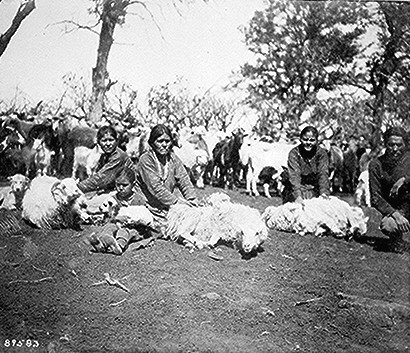
Sheep Shearing
Navajo women shearing sheep
photo id: 1136

